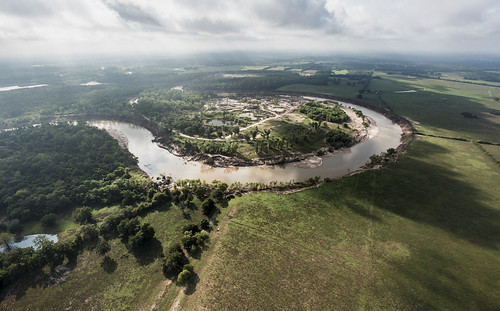
The Federal Emergency Management Agency (FEMA) reports that more than 25 million Americans – almost 8 percent of the population – were affected by major disasters in 2017. From severe flooding in Puerto Rico and Texas to mudslides and wildfires in California, major natural disasters in 2017 cost over $306 billion nationally. According to the National Oceanic and Atmospheric Administration’s National Centers for Environmental Information, this is a new annual record.
Dr. Daniel Kaniewski, FEMA’s Deputy Administrator for Protection and National Preparedness, said, “Investing in mitigation activities before the next disaster is the key to building a more resilient nation.” We cannot prevent natural disasters, but we do have the power to prepare for and potentially reduce their impacts through advanced planning.
What is the role of soil health in natural disaster mitigation?
There is no one-size-fits-all solution to preparing for natural disasters. Steps for planning ahead will engage our nation’s infrastructure, emergency responders, private citizens and members of every level of government. Dr. Bianca Moebius-Clune, Soil Health Division Director with the Natural Resources Conservation Service (NRCS), believes our nation’s farms, ranches, forests and even backyards have a role to play in providing mitigation benefits as well.
“We can’t make it rain, nor can we prevent a hurricane,” says Moebius-Clune. “But land managers can manage their land to increase the soil’s ability to take in, or infiltrate and drain, rainwater.” Increasing the amount of rainwater that infiltrates into the ground across the landscape ultimately decreases soil erosion and the potential for flooding by giving rain that could become flood water a place to go. “Soils that hold more water are also beneficial to crops in periods of drought,” adds Moebius-Clune. “That is another significant benefit of soil health management practices.”
By building healthier soils, land managers across the nation can increase human safety and protect critical infrastructure for all Americans when disaster events occur. Natural disasters impact us all. Improving the health of our nation’s soils is one step we can take to prepare for and ultimately mitigate those impacts.
What does managing for soil health look like?
Soil health is the capacity of the soil to function as a vital living ecosystem to support plants, animals and humans.
Whether managing an urban backyard or 1,000 acres of cropland, Moebius-Clune notes that key soil health management principles remain largely unchanged. “Healthy soils are generally undisturbed with abundant and diverse life, no compaction and relatively high levels of organic matter and stable aggregates.”
NRCS recommends four major principles for building healthy soils: minimize soil disturbance, maximize soil cover, maximize biodiversity and maximize the presence of living roots.
Farmers are encouraged to adopt conservation practices like no-till, crop rotations and cover crops to achieve these goals, but farmers aren’t the only ones able to make a difference. Soil health management principles can apply in nearly all human managed landscapes when properly adapted, even in small backyards.
How do soil health management practices apply to suburban and urban environments?
“Many of us are land managers around our own homes,” says Moebius-Clune. “If we can maintain a diversity of organisms – including plants that provide living roots throughout most of the year – and if we can refrain from disturbing and compacting our soils as much as possible, we can ultimately improve the ability of our backyard soils to take in water.”
With the amount of urban land in the United States more than quadrupling over the past 70 years, the land stewardship of private homeowners can contribute more to mitigation now than ever before.
“Roughly two-thirds of the land in the lower 48 states is privately owned, says Moebius-Clune. “The management decisions we make across every piece of that land contributes to the impact of those rainfall events that can either recharge the soil and groundwater, or contribute to the next flood.”
For more information on how you can build healthy soils, visit our website at www.nrcs.usda.gov.




